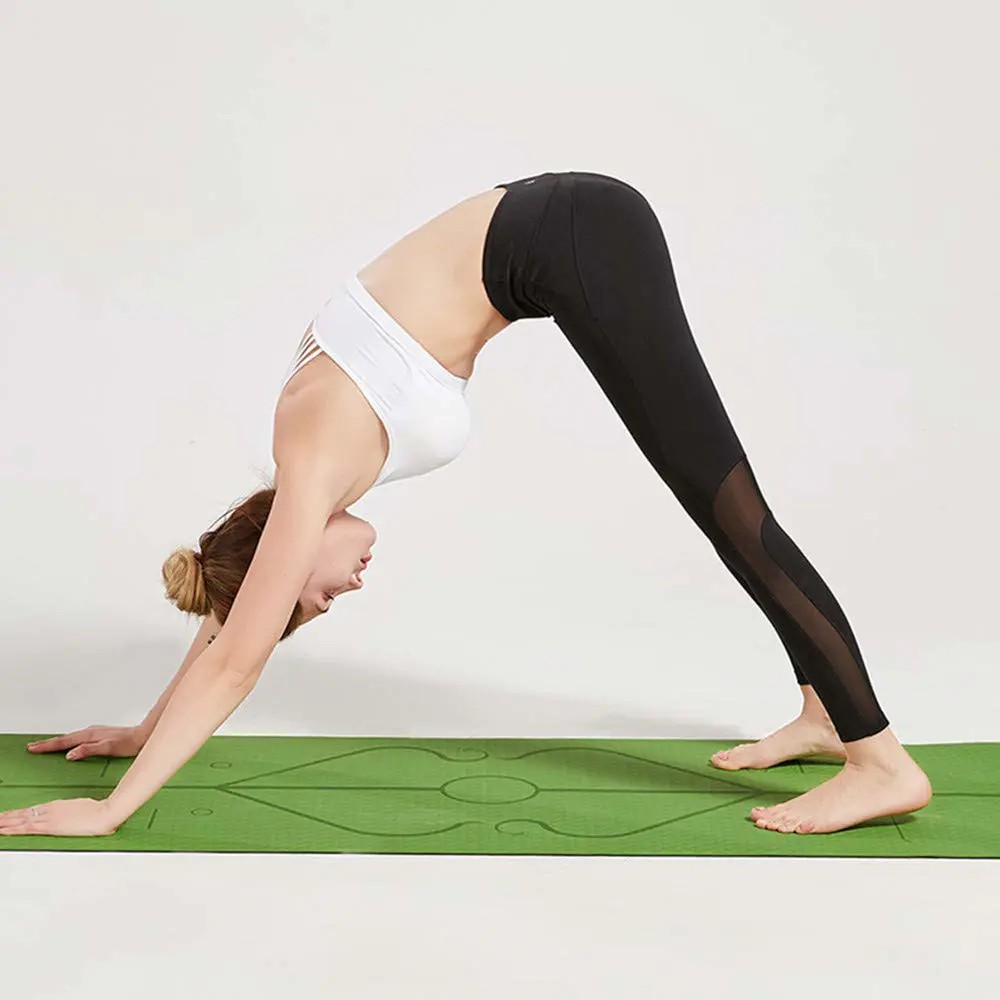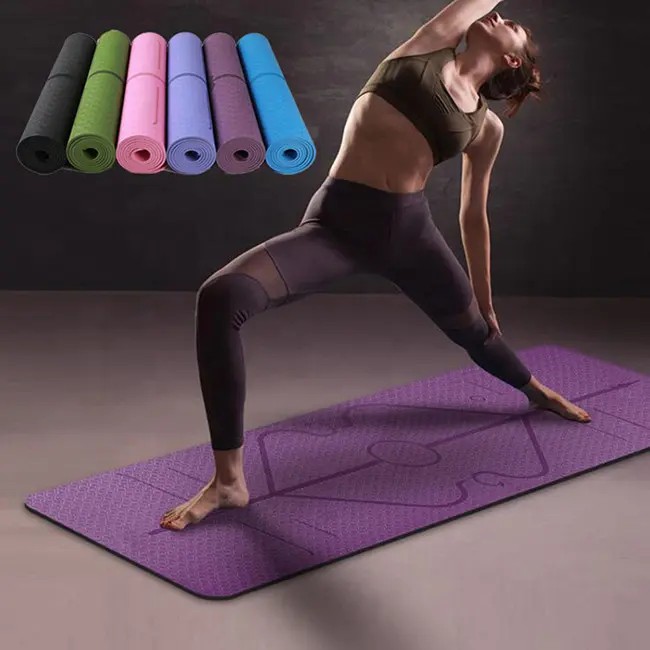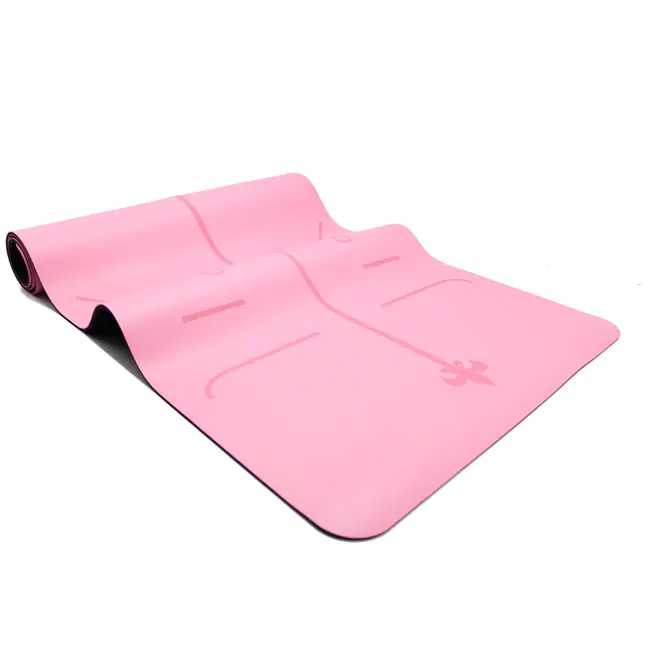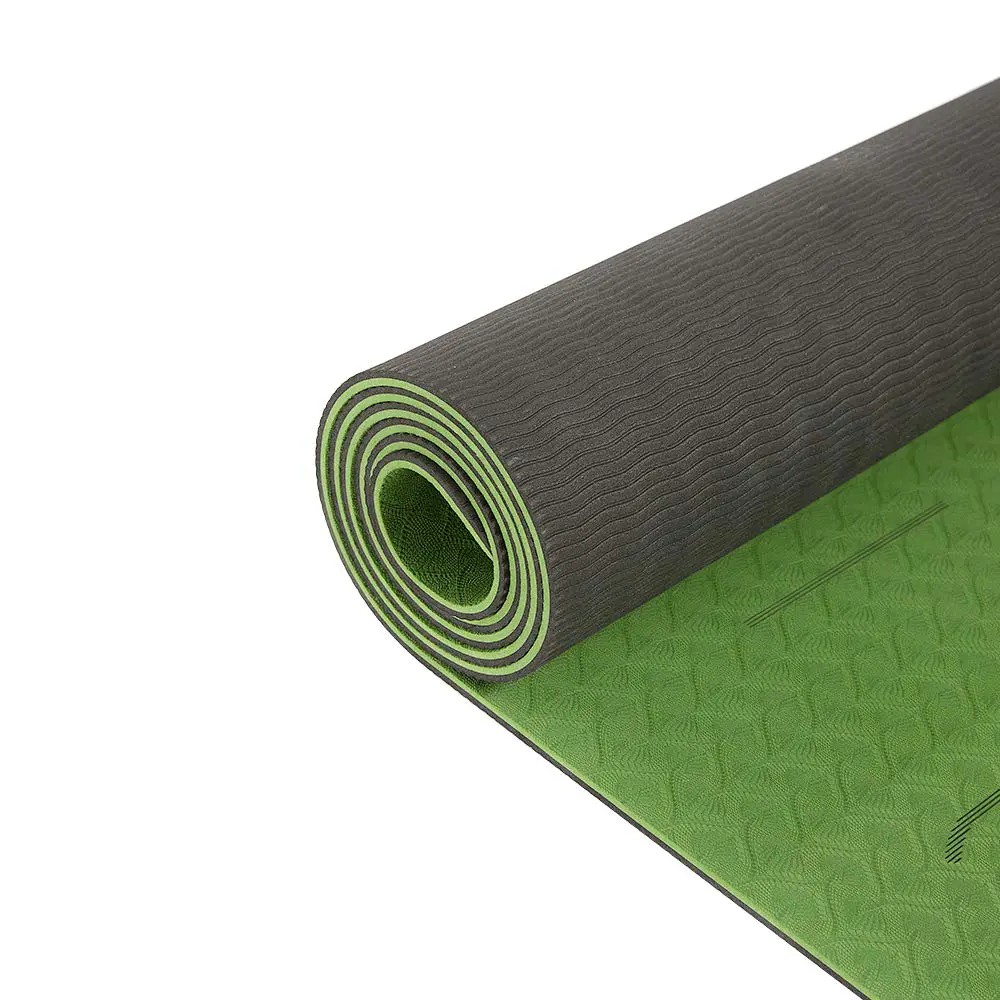Finding the perfect yoga mat can be surprisingly tricky. With countless options available, how do you know which one will truly support your practice?
As an expert yoga mat supplier, Tigerwings understands the challenges yogis face. This guide simplifies your decision. We'll explore the key factors to consider when choosing the best yoga mat for your need, ensuring you find the ideal balance of grip, comfort, and support.

Imagine this: you're in a downward-facing dog, fully immersed in your flow, when suddenly— whoosh— your hands start to slip. Not only is it distracting, but it can also be dangerous! A good yoga mat provides the grip you need to hold poses confidently and safely, allowing you to focus on your breath and alignment without fear of wiping out.
What impacts a yoga mat's grip? Several factors come into play:
● Material: Mats made from PVC, rubber, or TPE generally offer excellent grip. These materials have natural stickiness that helps keep you grounded, even during sweaty sessions.
● Texture: Look for mats with a textured surface; tiny bumps or patterns help to "grab" your hands and feet, providing extra traction. Some mats even have raised patterns for enhanced grip, mimicking the feel of a yoga towel.
● Moisture: Sweat is the enemy of grip! Many mats are designed to become more grippy as they get wet (amazing, right?). However, others may become slippery when damp. If you tend to perspire a lot, consider using a yoga towel over your mat for extra grip. You can also look for mats specifically designed to be "sweat-activated."
If your new mat feels a bit slippery at first, try washing it with a mild detergent and warm water. This can help remove any residual manufacturing oils that might be hindering the grip. You can also try lightly sanding the surface with fine-grit sandpaper for extra grip (but be careful not to damage the mat!).
While material and texture play a significant role, other factors can affect your mat's grip:
● Cleanliness: A build-up of dirt, sweat, and oils can make your mat less grippy over time. Regularly clean your mat according to the manufacturer's instructions to maintain optimal grip.
● Wear and Tear: As your mat ages, it may naturally lose some of its grip. If you notice your mat becoming slick in certain areas, it might be time to replace it.
● Your Hands and Feet: Believe it or not, the condition of your skin can also affect your grip! Dry hands or feet may be more prone to slipping. Keep your skin moisturized, and consider using a natural grip enhancer like chalk or rosin if needed.

Let's be honest, some yoga poses can be intense. Holding Warrior II for what feels like an eternity? Ouch! A comfortable yoga mat cushions your joints, providing support and padding to prevent discomfort during your practice.
Mat thickness plays a crucial role in comfort.
● Thicker mats (6mm or more) offer plush cushioning, ideal for those who need extra support for sensitive joints or prefer a softer surface. However, thicker mats can sometimes make it harder to feel grounded and stable in balancing poses.
● Thinner mats (1-4mm) provide a closer connection to the floor, which can be beneficial for balance and stability. However, they offer less cushioning, which may be uncomfortable for some.
The "best" thickness depends on your personal preferences and needs:
● Beginners: A thicker mat (around 5-6mm) can be a good starting point, offering ample cushioning as you build strength and flexibility.
● Travelers: If you're often on the go, a thinner, more portable mat might be a better choice. Many travel mats fold or roll up compactly, making them easy to pack.
● Experienced Yogis: As you advance, you may find yourself drawn to thinner mats that allow for a deeper connection to the floor.
While thickness is key, other factors contribute to comfort:
● Density: A denser mat provides more support and cushioning than a less dense mat of the same thickness.
● Material: Some materials, like TPE, are naturally softer and more cushioning than others.
● Your Body: Consider your individual needs. Do you have any joint pain or sensitivities? Do you prefer a firm or soft surface?
Pro Tip: If you're unsure about the thickness, try testing out different mats at a yoga studio or store. This will give you a feel for what's most comfortable for you. You can also try using a yoga blanket or towel on top of your mat for added cushioning.

Your yoga mat is an investment. You want it to last, right? Choosing a durable material ensures your mat can withstand regular use and maintain its quality over time. But durability isn't the only factor to consider. Many yogis today prioritize eco-friendly materials that are kind to the planet.
● PVC (Polyvinyl Chloride): PVC mats are known for their excellent grip, durability, and affordability. They're a popular choice for beginners and experienced yogis alike. However, PVC is not biodegradable and can be harmful to the environment.
● Rubber: Rubber mats offer a fantastic combination of grip, cushioning, and eco-friendliness. Natural rubber is a sustainable resource that biodegrades over time. However, rubber mats can be heavier and more expensive than PVC mats.
● TPE (Thermoplastic Elastomer): TPE mats are a newer option that combines the grip and cushioning of PVC with the eco-friendliness of rubber. TPE is a recyclable material that's free of latex, PVC, and other harmful chemicals.
If sustainability is a priority, look for mats made from natural or recycled materials. Some eco-friendly options include:
● Natural rubber: Harvested from rubber trees, this renewable resource is biodegradable and durable.
● Jute: A natural fiber with excellent grip and moisture-absorbing properties.
● Organic cotton: Soft, breathable, and biodegradable.
● Recycled materials: Many companies now offer mats made from recycled plastic bottles or other recycled materials.
When choosing an eco-friendly mat, look for certifications like GOTS (Global Organic Textile Standard) or OEKO-TEX to ensure the materials are sustainably sourced and free of harmful chemicals.
Proper care can extend the life of your yoga mat, regardless of the material.
● Clean your mat regularly: Wipe it down with a damp cloth or use a mat cleaner specifically designed for your mat's material.
● Air dry your mat thoroughly: Avoid leaving your mat in direct sunlight or heat, as this can damage the material.
● Store your mat properly: Roll it up or lay it flat in a cool, dry place.
We touched on thickness earlier when discussing comfort, but let's dive a little deeper. Yoga mats come in a wide range of thicknesses, from paper-thin travel mats to extra-thick options that feel like pillows. How do you know which thickness is right for you?
● Pros: Lightweight and portable, excellent stability and ground feel, ideal for travel and dynamic practices.
● Cons: Less cushioning, may not be suitable for those with joint pain or sensitivities.
● Pros: Good balance of cushioning and stability, versatile option for most yogis and styles of yoga.
● Cons: May not be as portable as thinner mats, may not provide enough cushioning for some.
Thick Mats (6mm and above):
● Pros: Maximum cushioning and support, ideal for those with joint pain or who prefer a softer surface.
● Cons: Can be bulky and less portable, may make balancing poses more challenging.
The type of yoga you practice can also influence your ideal thickness.
● Restorative yoga: A thicker mat can provide extra comfort during long holds and floor-based poses.
● Vinyasa or Power yoga: A thinner mat may be preferable for its stability and ground feel during dynamic movements.
● Travel: A thin, foldable mat is essential for yogis on the go.
If you're between sizes, it's often better to err on the side of slightly thicker. You can always add a yoga blanket or towel for extra cushioning if needed, but you can't make a thin mat thicker.
Ever noticed how some yoga mats have a smooth, almost slippery surface, while others feel grippy and textured? The texture of your mat can significantly impact your practice, affecting both grip and comfort.

● Smooth: These mats have a flat, even surface. They can be easy to clean but may offer less grip, especially when wet.
● Raised patterns: Some mats feature raised patterns or bumps that provide extra traction and grip. These patterns can also help to wick away moisture and prevent slipping.
● Embossed: Embossed mats have a textured surface with a 3D effect. This can enhance grip and add a touch of style to your mat.
● Fabric-like: Some mats have a textured surface that mimics the feel of a yoga towel. This can be a good option for yogis who like the extra grip and absorbency of a towel but prefer the cushioning of a mat.
The best texture for you depends on your personal preferences and needs.
● Sensitive skin: If you have sensitive skin, a smooth mat may be more comfortable.
● Hot yoga: A textured mat or a mat with a fabric-like surface can help to absorb sweat and prevent slipping during hot yoga.
● Grip concerns: If you're worried about slipping, a mat with raised patterns or an embossed texture can provide extra traction.
If you're unsure which texture to choose, try testing out different mats at a yoga studio or store. Pay attention to how the texture feels against your skin and how it affects your grip during different poses.
Choosing the right yoga mat can truly elevate your practice. By considering factors like grip, comfort, material, thickness, and texture, you can find a mat that supports your body and enhances your yoga journey.
Remember these key takeaways:
● Prioritize grip: A grippy mat keeps you stable and safe during poses.
● Don't skimp on comfort: Adequate cushioning protects your joints and ensures a comfortable practice.
● Choose durable materials: Invest in a mat that will last and withstand regular use.
● Consider thickness carefully: Find the right balance between cushioning and stability.
● Explore different textures: Experiment to discover the texture that feels best for you.
Looking for high-quality, eco-friendly yoga mats? As a leading yoga mat manufacturer, Tigerwings offers fully customizable options—from materials and textures to colors and patterns. Our OEM/ODM services ensure you get the perfect mat for your business, all made with sustainable materials for a greener workout experience. Explore Tigerwings' collection today!
Copyright © 2025 Tigerwings Rubber& Plastic Product Manufactory | All Rights Reserved